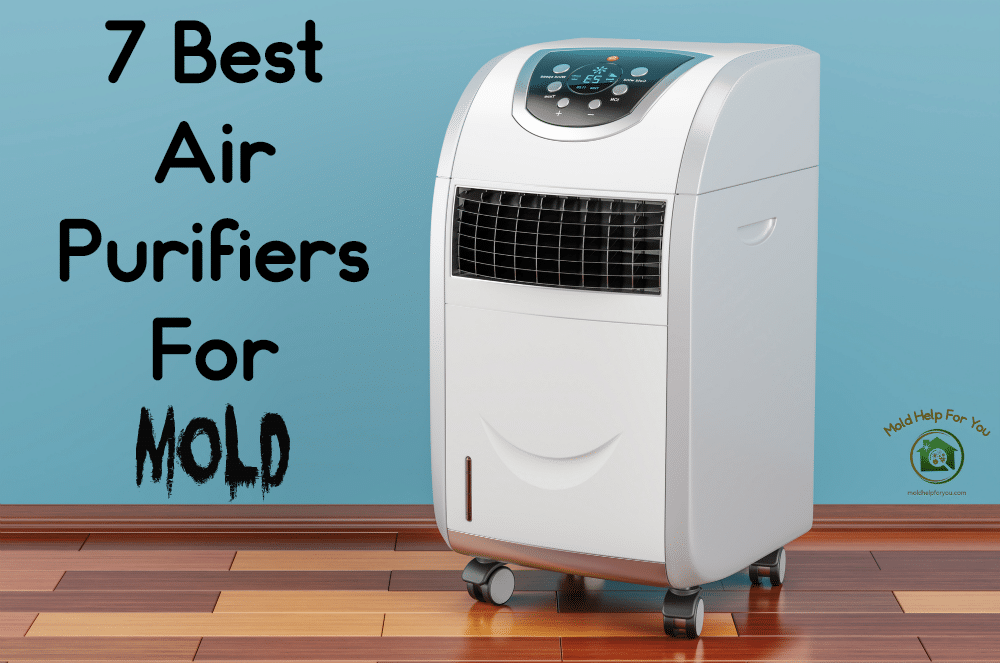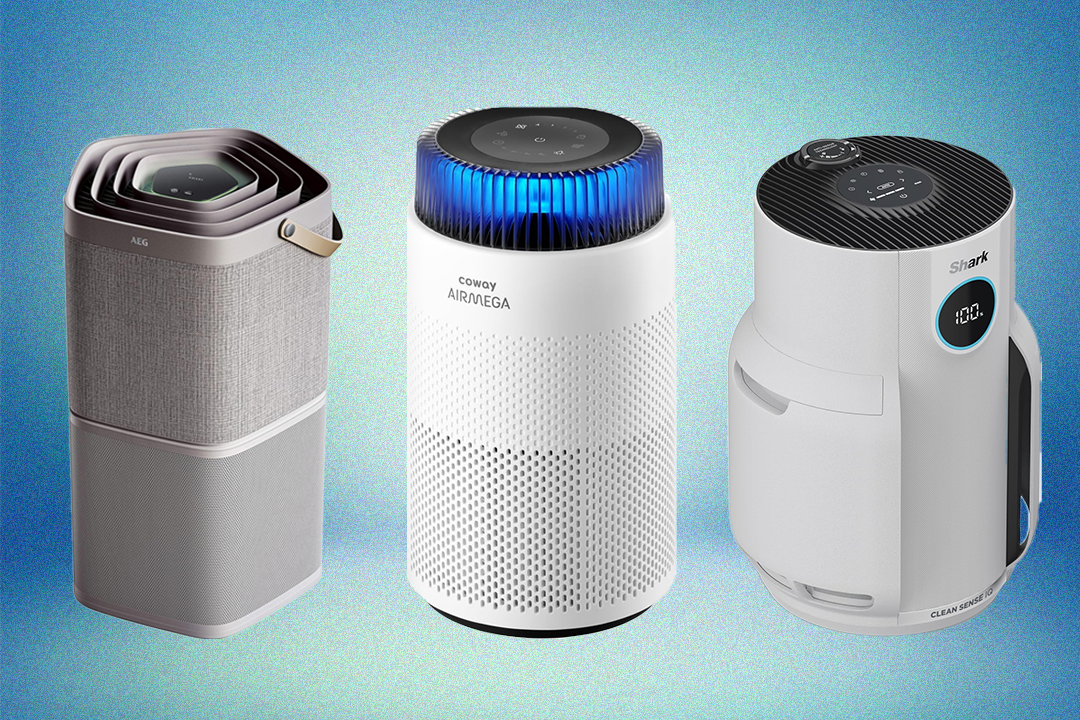Best Air Purifier For Mold And Allergens

Breathe easier with a home free from mold and allergens. For homeowners, real estate investors, and contractors alike, maintaining healthy indoor air quality is a priority. Mold and allergens can trigger respiratory issues, exacerbate allergies, and negatively impact overall well-being. Choosing the right air purifier can significantly improve indoor air quality, creating a healthier and more comfortable living environment. This buying guide explores the best air purifiers for mold and allergens, comparing features, brands, and costs to help you make an informed decision.
Understanding Air Purification Technologies
Before diving into specific models, it's crucial to understand the different technologies used in air purifiers and how they address mold and allergens.
- HEPA Filters: High-Efficiency Particulate Air (HEPA) filters are the gold standard for capturing airborne particles. They are designed to trap 99.97% of particles 0.3 microns in size, including mold spores, pollen, dust mites, and pet dander.
- Activated Carbon Filters: These filters use activated carbon to adsorb odors, gases, and volatile organic compounds (VOCs). While not effective at removing mold spores themselves, they can help eliminate musty odors associated with mold growth.
- UV-C Light: Ultraviolet-C (UV-C) light can kill bacteria, viruses, and mold spores. Some air purifiers incorporate UV-C lamps to disinfect the air as it passes through the unit. However, the effectiveness of UV-C light depends on the intensity and exposure time, so it's essential to choose a purifier with a powerful and well-designed UV-C system.
- Ionic Purifiers: Ionic purifiers release negatively charged ions that attach to airborne particles, causing them to clump together and fall to the ground or stick to surfaces. While they can remove some particles from the air, they don't actually capture them and can potentially generate ozone, which is a lung irritant.
- PECO (Photo Electrochemical Oxidation): PECO technology uses UV light and a titanium dioxide catalyst to break down pollutants at a molecular level. This can be more effective than traditional filtration methods for removing VOCs and other gaseous pollutants.
Top Air Purifier Brands and Models for Mold and Allergens
Here's a comparison of some of the top air purifier brands and models, focusing on their effectiveness against mold and allergens:
Levoit Core 300S
The Levoit Core 300S is a popular choice for small to medium-sized rooms. It features a three-stage filtration system, including a pre-filter, a HEPA filter, and an activated carbon filter. It also boasts smart features like app control and voice assistant compatibility.
- Pros: Affordable, compact design, quiet operation, smart features.
- Cons: Limited coverage area, may require frequent filter replacements.
- Features: HEPA filter, activated carbon filter, smart control, sleep mode.
- Pricing: Approximately $100 - $120
Coway Airmega 400S
The Coway Airmega 400S is designed for larger rooms and offers a powerful filtration system with a pre-filter, a HEPA filter, and an activated carbon filter. It also features a pollution sensor that automatically adjusts the fan speed based on air quality.
- Pros: Large coverage area, smart features, auto mode, durable construction.
- Cons: Higher price point, larger size.
- Features: HEPA filter, activated carbon filter, smart control, auto mode, filter life indicator.
- Pricing: Approximately $400 - $500
Dyson Purifier Cool Formaldehyde TP09
The Dyson Purifier Cool Formaldehyde TP09 is a multi-functional device that combines air purification with fan and heating capabilities. It features a HEPA filter, an activated carbon filter, and a catalytic filter that destroys formaldehyde. It also has a sealed filtration system to prevent pollutants from escaping back into the air.
- Pros: Multi-functional, removes formaldehyde, sealed filtration, stylish design.
- Cons: High price point, can be noisy at higher fan speeds.
- Features: HEPA filter, activated carbon filter, catalytic filter, sealed filtration, fan and heater functions, smart control.
- Pricing: Approximately $600 - $700
Molekule Air Pro
The Molekule Air Pro utilizes PECO technology to destroy pollutants at a molecular level, including mold spores, VOCs, and allergens. It features a pre-filter and a PECO filter and is designed for large rooms.
- Pros: Advanced PECO technology, effective at removing a wide range of pollutants, sleek design.
- Cons: High price point, PECO filter can be expensive to replace.
- Features: PECO technology, pre-filter, smart control, filter life indicator.
- Pricing: Approximately $800 - $900
Blueair Blue Pure 211+
The Blueair Blue Pure 211+ is a popular choice for its simple design and effective filtration. It features a washable fabric pre-filter, a particle filter, and an activated carbon filter. It's designed for medium to large rooms.
- Pros: Affordable, easy to use, effective filtration, washable pre-filter.
- Cons: Lacks smart features, can be noisy at higher fan speeds.
- Features: Particle filter, activated carbon filter, washable pre-filter, simple controls.
- Pricing: Approximately $200 - $250
Factors to Consider When Choosing an Air Purifier
When selecting an air purifier for mold and allergens, consider the following factors:
- Room Size: Choose an air purifier that is appropriately sized for the room you want to purify. The manufacturer's specifications will typically indicate the recommended square footage.
- Filtration System: Look for air purifiers with HEPA filters to effectively capture mold spores and allergens. Activated carbon filters are also beneficial for removing odors.
- CADR (Clean Air Delivery Rate): CADR measures the speed at which an air purifier cleans a room. Higher CADR ratings indicate faster and more effective air purification.
- Noise Level: Consider the noise level of the air purifier, especially if you plan to use it in a bedroom or office. Look for models with a sleep mode or quiet operation.
- Maintenance: Factor in the cost and frequency of filter replacements. Some air purifiers have washable pre-filters to extend the life of the main filters.
- Smart Features: Some air purifiers offer smart features like app control, voice assistant compatibility, and air quality monitoring.
- Warranty: Check the manufacturer's warranty to ensure coverage for potential defects or malfunctions.
HVAC Systems and Air Purification
While portable air purifiers can be effective for localized air cleaning, integrating air purification into your HVAC system can provide whole-house air quality improvement. Some HVAC systems offer optional air purification add-ons, such as:
- Whole-House HEPA Filters: These filters are installed in your HVAC system to remove airborne particles from the entire home. They require professional installation and may reduce airflow.
- UV-C Lights: UV-C lights can be installed in the HVAC ductwork to kill bacteria, viruses, and mold spores as they circulate through the system.
- Electronic Air Cleaners: Electronic air cleaners use ionization or electrostatic precipitation to remove particles from the air. They can be more effective than traditional filters but may require more maintenance.
When considering HVAC-integrated air purification, it's essential to consult with an HVAC professional to ensure proper installation and compatibility with your existing system. Factors like AFUE, SEER, and HSPF ratings (measures of energy efficiency for furnaces, air conditioners, and heat pumps, respectively) are not directly related to air purification but are important considerations when evaluating the overall performance and cost-effectiveness of your HVAC system.
Warranty and Maintenance
Understanding the warranty and maintenance requirements for your air purifier is crucial for ensuring its longevity and performance.
Warranty: Most air purifiers come with a limited warranty that covers defects in materials and workmanship. The length of the warranty can vary from one year to five years or more. Be sure to read the warranty terms and conditions carefully to understand what is covered and what is not.
Maintenance: Regular maintenance is essential for keeping your air purifier running efficiently. This typically involves:
- Replacing Filters: HEPA filters and activated carbon filters need to be replaced periodically, according to the manufacturer's recommendations. The frequency of filter replacements will depend on the air quality in your home and the usage of the air purifier.
- Cleaning Pre-Filters: Washable pre-filters should be cleaned regularly to remove large particles and extend the life of the main filters.
- Cleaning the Unit: The exterior of the air purifier should be cleaned regularly with a damp cloth to remove dust and debris.
Conclusion
Choosing the best air purifier for mold and allergens requires careful consideration of your specific needs and budget. By understanding the different air purification technologies, comparing popular models, and considering factors like room size, CADR, and maintenance requirements, you can make an informed decision and create a healthier and more comfortable living environment. Remember that while air purifiers can significantly improve indoor air quality, they are not a substitute for addressing the underlying causes of mold and allergen problems, such as moisture issues and inadequate ventilation. Consulting with a professional mold remediation specialist or HVAC technician may be necessary to resolve these underlying issues. With the right air purifier and a proactive approach to indoor air quality management, you can breathe easier and enjoy a healthier home.
:max_bytes(150000):strip_icc()/hlt-product-winx-5500-2-4-stage-true-hepa-air-purifier-hwortock-002-8bc59481b91a478ca190592b9567d2e8.jpeg)









